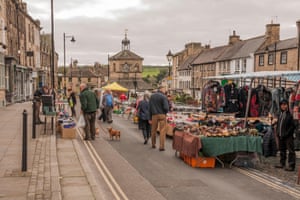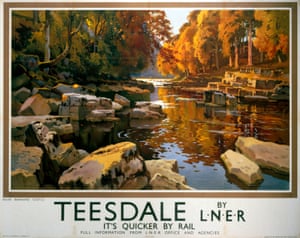When I tell people that I’m off to have a long weekend in Teesdale – which is more often than you might think – there inevitably follows a moment of confusion. They always think I mean Teeside, and even as they smile politely, I can see them struggling to imagine why on earth I might want to spend my free time down among all the chemical plants. But, no. Lovely as Middlesbrough is at this or any other time of year, the only thing Teeside and Teesdale have in common is the river from which they both derive their name.
Upper Teesdale is a well-kept secret, even if its seclusion was briefly threatened last year when Dominic Cummings made his outlandish bid for freedom in Barnard Castle, its biggest town; thanks to the fact that it’s not in a national park – though most of it is in the North Pennines area of outstanding natural beauty – it attracts fewer visitors than the Yorkshire Dales to the south, or Northumberland to the north. But I’ve always known about it. My Sunderland grandparents used to take their holidays in Middleton-in-Teesdale and, somehow, I’ve got into the habit of doing the same. In middle age, in fact, it is one of my top three places on earth. In our hall is an old railway poster, bought at auction for more money than was strictly sensible. TEESDALE BY LNER, it says, next to a painting of some woods by a bridge over water. If the house were on fire, this is one of the things I’d grab on my way out.

Barnard Castle is great. It has brilliant antique shops – my favourite is Robsons on The Bank, where the old quilts, silver and china are piled waist high – and it’s the kind of place where (this is important) you can buy fresh jam tarts. It’s also the home of the extraordinary Bowes Museum, which could not look more like a French chateau if it were in the Loire valley, and where every day at 2pm the Silver Swan, an automaton that was once admired by Mark Twain, majestically dips its neck to seize a fish from the stream of twisted glass rods on which it floats (this gorgeous creature has belonged to the museum since 1872, and its oh-so-fleeting daily routine is one of the most magical things I’ve ever seen). Barnard Castle is also the starting point for one of my favourite walks: a section of the Teesdale Way that begins at the ruins of Egglestone Abbey, and which takes you past Rokeby Park, the Palladian villa that was once the home of the Rokeby Venus by Velázquez, and the Meeting of the Waters, where the River Greta meets the Tees, a scene famously painted by JMW Turner. Not for nothing is the woodland along this stretch known as Paradise.
Drive north west from Barnard Castle, and the route will take you through the loveliest villages: Cotherstone, where a Dales cheese, the flavour of which Neal’s Yard Diary describes quite delightfully as “bouncy”, has been made since at least 1858; Lartington, in whose hall a family of recusants lived in Civil War times; and Romaldkirk, where there is a creeper-clad inn, the Rose & Crown, that’s a lovely place to stay. I love Romaldkirk, with its wide greens, grand houses and Grade I-listed church (in its cemetery – a little way from the church – are the graves of the modernist architects Maxwell Fry and Jane Drew, who retired to Teesdale, and Hannah Hauxwell, the Yorkshire farmer of legend). Before the Beeching cuts, there was a railway station here, and the old signal marks the start of a walk that follows the abandoned line – a stroll best taken in the dappled light of an early spring evening, just before your first drink. At a certain point, you’ll reach high ground; England is narrow here, and on a clear day you can see both the foothills of the Lake District and – or so I like to imagine – the North Sea.

Beyond Romaldkirk – the moors look very stirring as you head over the tops – is Middleton-in-Teesdale, in the 19th century the headquarters of the London Lead Company, and then you come to High Force, one of the most spectacular waterfalls in Britain (also famously sketched by Turner). The water crashes from 21m above you, over Great Whin Sill Ridge. The High Force Inn has recently been refurbished by the Raby Estate, the local landowner (you can visit Lord Barnard’s seat, Raby Castle, near Staindrop, a building that’s straight out of central casting). But you might just want to keep walking. This, after all, is a stretch of the Pennine Way. In the Upper Teesdale Nature Reserve is the largest juniper wood in England, and the pastures nearby are a botanist’s delight. Not only are they flecked, in season, with mountain pansies, lady’s mantle and early purple orchids – this is also the only place in England where you will ever be lucky enough to see the Yves Klein blue flowers of the spring gentian growing in the wild.





